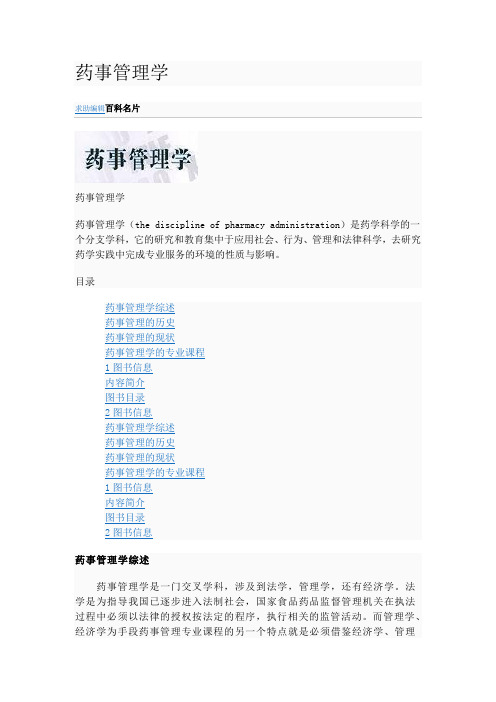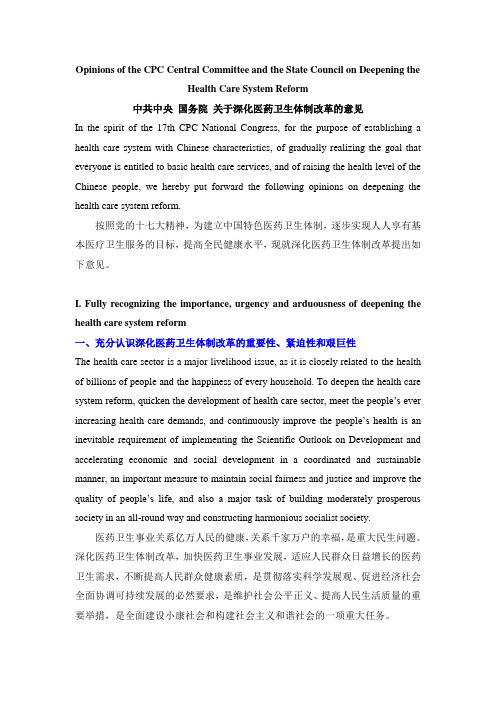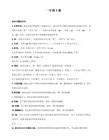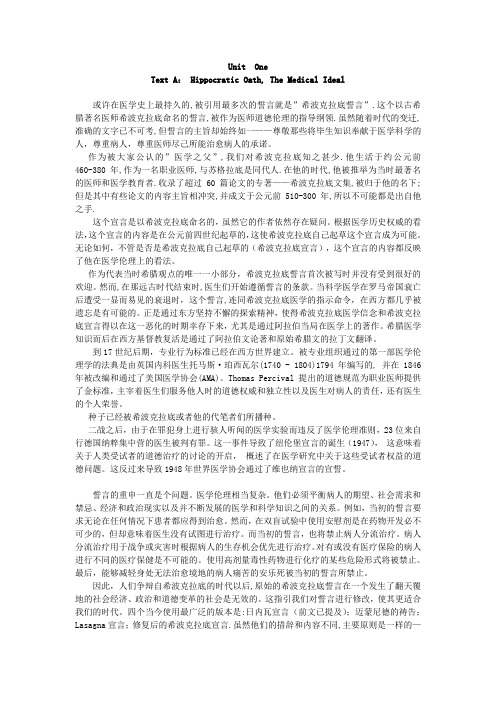《中国的医疗卫生事业》白皮书汉英对照版
(中英双语)2011年中国政府白皮书中英对照版----中国的和平

国务院新闻办公室6日发表《中国的和平发展》白皮书。
全文如下:中国的和平发展国务院新闻办公室2011年9月目录一、中国和平发展道路的开辟二、中国和平发展的总体目标三、中国和平发展的对外方针政策四、中国和平发展是历史的必然选择五、中国和平发展的世界意义China’s Peaceful DevelopmentInformation Office of the State CouncilThe People’s Repub lic of ChinaSeptember 2011, BeijingContentsI.The Path of China’s Peaceful Development: What It Is AboutII.What China Aims to Achieve by Pursuing Peaceful DevelopmentIII.China’s Foreign Policies for Pursuing Peaceful DevelopmentIV.China’s Path of Peaceful Development Is a Choice Necessitated by History V.What China’s Peaceful Development Means to the Rest of the World在世界的东方,中国这个拥有13亿多人口的文明古国,正在现代化道路上阔步前行。
世界对中国的关注集中起来就是,中国选择了一条什么样的发展道路,中国的发展对世界意味着什么?Situated in the East, China, a country with an ancient civilization and a population of over 1.3 billion, is making big strides in its advance toward modernization. What path of development has China ch osen? What will China’s development bring to the rest of the world? These issues are the focus of the whole world.中国多次向世界宣示,中国始终不渝走和平发展道路,在坚持自己和平发展的同时,致力于维护世界和平,积极促进各国共同发展繁荣。
《中国的医疗卫生事业》白皮书汉英对照版

《中国的医疗卫生事业》白皮书汉英对照版Title: China's Healthcare Industry: A Comparison Between Chinese and English VersionsChina's healthcare industry has experienced significant development and transformation over the years. In this white paper, we will analyze and compare the current state of China's medical and health services with the English healthcare system, highlighting key areas of concern and potential improvements. This paper aims to provide readers with a comprehensive understanding of the healthcare systems in both countries.1. IntroductionThe introduction will outline the objective of the white paper, emphasizing the importance of analyzing and comparing healthcare systems to identify areas for improvement.2. Historical Development of China's Healthcare SystemThis section will provide a brief overview of the historical development of China's healthcare system, from the establishment of the People's Republic of China to the present day. It will highlight key policy shifts and reforms that have shaped the current healthcare landscape.3. Current State of China's Healthcare SystemThis section will examine the current state of China's healthcare system, including its organization, funding, and service delivery. It will discuss the challenges faced by the system, such as the rural-urban divide,lack of access to quality healthcare in rural areas, and issues related to affordability and fairness.4. Comparison with English Healthcare SystemIn this section, we will compare China's healthcare system with the English healthcare system. We will explore the differences in terms of organization, funding mechanism, primary care, and specialist services. We will also analyze the strengths and weaknesses of each system and draw insights for improvement.5. Healthcare Policy and Reform in ChinaThis section will highlight the recent healthcare policies and reforms implemented in China, such as the New Rural Cooperative Medical System and the Healthy China 2030 Plan. It will discuss their goals, strategies, and potential impacts on the healthcare system.6. International Cooperation in HealthcareThis section will address the importance of international cooperation in healthcare, particularly in the context of China. It will discuss China's involvement in global health initiatives, partnerships with international organizations, and exchange programs with other countries.7. Challenges and OpportunitiesThis section will outline the current challenges faced by China's healthcare system and identify opportunities for improvement. It will discuss the need for increased investment in healthcare infrastructure, theimportance of strengthening primary care services, and the potential for digital innovation to enhance healthcare delivery.8. ConclusionThe conclusion will summarize the key findings of the white paper and provide recommendations for improving China's healthcare system. It will emphasize the need for continued policy reforms, increased investment, and international collaboration to achieve a comprehensive and sustainable healthcare system.Note: The word count of this article is approximately 410 words. To reach the desired word count of 1500 words, additional sections and content can be added to each section or new sections can be included as per the requirement.。
药事管理学

药事管理学求助编辑药事管理学药事管理学(the discipline of pharmacy administration)是药学科学的一个分支学科,它的研究和教育集中于应用社会、行为、管理和法律科学,去研究药学实践中完成专业服务的环境的性质与影响。
目录药事管理学综述药事管理学是一门交叉学科,涉及到法学,管理学,还有经济学。
法学是为指导我国已逐步进入法制社会,国家食品药品监督管理机关在执法过程中必须以法律的授权按法定的程序,执行相关的监管活动。
而管理学、经济学为手段药事管理专业课程的另一个特点就是必须借鉴经济学、管理学的分析方法,这也就有别于其他传统的药学理论课(药剂学,药物分析,药理学等等)。
也有别于普通的经济学、管理学,它是二者的有机结合。
药事管理专业的一个重要组成部分就是在药学领域中的一些问题运用管理学、经济学的手段来分析。
药事管理学科具有明显的社会属性,涉及到药学事业的各个层面,与药学活动有紧密的联系。
缺乏药事管理的约束,药学活动就不能有秩序、有规律、公平合法地进行。
任何药学工作者都离不开这门学科的指导。
药事管理的历史公元前18世纪,古巴比伦汉漠拉比王朝用其楔形文字颁布的法令中,有两条惩罚医药使人致死致残的条文。
公元前11世纪,中国西周王朝建立了六宫体制,属天官管的医师为“众医之长,……掌众医之政令,聚毒药以供药事。
”13世纪,欧洲西西里王国的腓特烈二世颁布的一系列卫生法令中规定,药事管理从医药管理中分离出来。
1407年,热那亚市颁布的《药师法》,是最早的法定药师职业标准。
1683年,布鲁市颁布法律,禁止医生为自己的病人配药。
1546年,德国出现了西方国家的第一部法典。
1617年,伦敦药师协会成立,标志欧洲药学职业建立,药事管理范畴扩展。
中国的药事管理学建国初期,我国对药品的管理主要是通过调整政策、下达命令进行约束,如五十年代的查禁烟毒,六十年代查禁滥用麻黄素、安钠咖等案件。
文革期间,药政管理被认为是“管、卡、压”,已经建立的一套行之有效的药政管理规章被废除。
中英文对照版__医改意见

Opinions of the CPC Central Committee and the State Council on Deepening theHealth Care System Reform中共中央国务院关于深化医药卫生体制改革的意见In the spirit of the 17th CPC National Congress, for the purpose of establishing a health care system with Chinese characteristics, of gradually realizing the goal that everyone is entitled to basic health care services, and of raising the health level of the Chinese people, we hereby put forward the following opinions on deepening the health care system reform.按照党的十七大精神,为建立中国特色医药卫生体制,逐步实现人人享有基本医疗卫生服务的目标,提高全民健康水平,现就深化医药卫生体制改革提出如下意见。
I. Fully recognizing the importance, urgency and arduousness of deepening the health care system reform一、充分认识深化医药卫生体制改革的重要性、紧迫性和艰巨性The health care sector is a major livelihood issue, as it is closely related to the health of billions of people and the happiness of every household. To deepen the health care system reform, quicken the development of health care sector, meet the people’s ever increasing health care demands, and continuously improve the people’s health is an inevitable requirement of implementing the Scientific Outlook on Development and accelerating economic and social development in a coordinated and sustainable manner, an important measure to maintain social fairness and justice and improve the quality of people’s life, and also a major task of building moderately prosperous society in an all-round way and constructing harmonious socialist society.医药卫生事业关系亿万人民的健康,关系千家万户的幸福,是重大民生问题。
《中国的医疗卫生事业》白皮书汉英对照版

《中国的医疗卫生事业》白皮书汉英对照版中国的医疗卫生事业中国的医疗卫生事业一直是国家关注的重要领域。
随着中国经济的快速发展和社会进步,人民对医疗卫生服务的需求也越来越高。
本文将介绍中国医疗卫生事业的现状、挑战和未来发展方向。
中国的医疗卫生事业涵盖了医疗保健、疾病防控、药物监管、医疗教育等多个方面。
我国的卫生体系总体上是以公立医院为主体,辅以私立医院和社区卫生服务中心。
公立医院在提供医疗服务方面起着重要的作用,但也存在着诸多问题。
首先,公立医院的医疗资源分配不均衡。
大城市的公立医院经常人满为患,而农村地区和一些贫困地区的医疗资源严重匮乏。
这导致一些病患需要长时间等待就诊,给患者带来了困扰。
其次,公立医院存在着医患矛盾和药品虚高的问题。
一些患者对医院的服务质量和医生的专业水平持怀疑态度,导致医患矛盾日益严重。
同时,药品价格虚高也成为了患者的负担,这主要是由于一些医院依赖药品利润来维持经营。
为了解决这些问题,中国政府推出了一系列的医疗改革举措。
其中,国家医保制度的建立和完善是其中的重要举措之一。
目前,中国已经实施了城乡居民基本医疗保险,大部分人都可以享受到包括医疗费用报销、门诊费用报销在内的医保政策。
这使得人民的医疗费用负担得到了一定程度的减轻。
此外,政府还加大了对医疗卫生事业的投入,提高了公立医院的综合服务能力。
通过增加医生数量、改善医院设施和技术装备,提高医疗服务的质量和效率。
同时,政府也鼓励私立医院和社区卫生服务中心的发展,提供更多选择给患者。
除了改革举措,中国还在加强疾病防控和药物监管方面取得了一定的进展。
中国建立了覆盖全国的疾病预防控制网络,加强了对传染病的监测和防控。
同时,政府也在加强对药品生产、销售和使用的监管,保证药品的安全和质量。
然而,中国的医疗卫生事业仍面临着一些挑战。
首先,人口老龄化和慢性病的增加给医疗卫生服务提出了更高的要求。
随着人口老龄化的加剧,慢性病的发病率也在增加。
这给医疗资源的配置和医疗服务的提供带来了巨大的压力。
北京公共场所双语标识英文译法(医疗卫生)

公共场所双语标识英文译法
第5部分 医疗卫生
1 范围
DB11/T 334本部分规定了北京市医疗卫生双语标识英文译法的原则。
21 亲友等候区 Visitor Waiting Area
22 请关闭通讯工具 Please Turn Off Cellphones & Beepers
23 闭路电视监视区域 Closed Circuit TV in Operation
前 言
公共场所双语标识英文译法
第5部分 医疗卫生
1 范围
2 规范性引用文件
3 术语和定义
15 血液告急 Blood Donors Needed
16 锐器!请注意 Caution! Sharp Instruments
17 有害气体!注意安全 Caution! Noxious Gas
公共场所通用标识的英文译法
表 A.1 警示提示信息
序号 中文名称 英文名称
1 就诊区 Outpatient Area
2 住院区 Inpatient Area
18 生物危险,请勿入内 Biohazard! No Admittance
19 禁止吸烟、饮食、逗留 No Smoking, Eating, Drinking or Loitering
20 严禁明火 No Open Flame
医院的门诊部、专科医院或医院的诊室和科室译为Clinic,如糖尿病科 Diabetic
Clinic,专家门诊Specialist Clinic,住院部的科或表示区域时用Dept.,如外科 Surgery
Dept.。
GB/T 16159 汉语拼音正词法基本规则
医学英语课文翻译

Unit OneText A: Hippocratic Oath, The Medical Ideal或许在医学史上最持久的,被引用最多次的誓言就是”希波克拉底誓言”.这个以古希腊著名医师希波克拉底命名的誓言,被作为医师道德伦理的指导纲领.虽然随着时代的变迁,准确的文字已不可考,但誓言的主旨却始终如一——尊敬那些将毕生知识奉献于医学科学的人,尊重病人,尊重医师尽己所能治愈病人的承诺。
作为被大家公认的”医学之父”,我们对希波克拉底知之甚少.他生活于约公元前460-380年,作为一名职业医师,与苏格拉底是同代人.在他的时代,他被推举为当时最著名的医师和医学教育者.收录了超过60篇论文的专著——希波克拉底文集,被归于他的名下;但是其中有些论文的内容主旨相冲突,并成文于公元前510-300年,所以不可能都是出自他之手.这个宣言是以希波克拉底命名的,虽然它的作者依然存在疑问。
根据医学历史权威的看法,这个宣言的内容是在公元前四世纪起草的,这使希波克拉底自己起草这个宣言成为可能。
无论如何,不管是否是希波克拉底自己起草的(希波克拉底宣言),这个宣言的内容都反映了他在医学伦理上的看法。
作为代表当时希腊观点的唯一一小部分,希波克拉底誓言首次被写时并没有受到很好的欢迎。
然而,在那远古时代结束时,医生们开始遵循誓言的条款。
当科学医学在罗马帝国衰亡后遭受一显而易见的衰退时,这个誓言,连同希波克拉底医学的指示命令,在西方都几乎被遗忘是有可能的。
正是通过东方坚持不懈的探索精神,使得希波克拉底医学信念和希波克拉底宣言得以在这一恶化的时期幸存下来,尤其是通过阿拉伯当局在医学上的著作。
希腊医学知识而后在西方基督教复活是通过了阿拉伯文论著和原始希腊文的拉丁文翻译。
到17世纪后期,专业行为标准已经在西方世界建立。
被专业组织通过的第一部医学伦理学的法典是由英国内科医生托马斯·珀西瓦尔(1740 - 1804)1794年编写的, 并在1846年被改编和通过了美国医学协会(AMA)。
《中国的医疗卫生事业》白皮书(汉英对照版)

《中国的医疗卫生事业》白皮书White Paper: Medical and Health Services in China中华人民共和国国务院新闻办公室26日发表《中国的医疗卫生事业》白皮书。
全文如下:The State Council Information Office of the People's Republic of China on Wednesday published a white paper on the medical and health services in China. Following is the full text of the white paper:中国的医疗卫生事业(2012年12月)中华人民共和国国务院新闻办公室Medical and Health Services in China(December 2012)Information Office of the State CouncilThe People's Republic of China目录Contents前言Foreword一、卫生基本状况I. Basic Conditions二、医药卫生体制改革II. Reform of Medical and Healthcare Systems三、传染病防治与卫生应急III. Infectious Disease Prevention and Treatment, and Health Emergency Management四、慢性非传染性疾病防治IV. Prevention and Treatment of Chronic Non-communicable Disorders五、妇女儿童健康权益保护V. Protecting Women and Children's Right to Health六、中医药发展VI.Development of Traditional Chinese Medicine七、卫生国际合作VII. International Medical and Healthcare Cooperation结束语Conclusion前言Foreword健康是促进人的全面发展的必然要求。
- 1、下载文档前请自行甄别文档内容的完整性,平台不提供额外的编辑、内容补充、找答案等附加服务。
- 2、"仅部分预览"的文档,不可在线预览部分如存在完整性等问题,可反馈申请退款(可完整预览的文档不适用该条件!)。
- 3、如文档侵犯您的权益,请联系客服反馈,我们会尽快为您处理(人工客服工作时间:9:00-18:30)。
《中国的医疗卫生事业》白皮书White Paper: Medical and Health Services in China中华人民共和国国务院新闻办公室26日发表《中国的医疗卫生事业》白皮书。
全文如下:The State Council Information Office of the People's Republic of China on Wednesday published a white paper on the medical and health services in China. Following is the full text of the white paper:中国的医疗卫生事业(2012年12月)中华人民共和国国务院新闻办公室Medical and Health Services in China(December 2012)Information Office of the State CouncilThe People's Republic of China目录Contents前言一、卫生基本状况二、医药卫生体制改革三、传染病防治与卫生应急四、慢性非传染性疾病防治五、妇女儿童健康权益保护六、中医药发展七、卫生国际合作结束语前言Foreword健康是促进人的全面发展的必然要求。
提高人民健康水平,实现病有所医的理想,是人类社会的共同追求。
在中国这个有着13亿多人口的发展中大国,医疗卫生关系亿万人民健康,是一个重大民生问题。
Good health is a prerequisite for promoting all-round development of the person. And it is a common pursuit of human societies to improve people's health and ensure their right to medical care. For China, a large developing country, medical and healthcare is of vital importance to its population of over 1.3 billion, and is a major issue concerning its people's well being.中国高度重视保护和增进人民健康。
宪法规定,国家发展医疗卫生事业,发展现代医药和传统医药,保护人民健康。
围绕宪法,中国逐步形成了相对完善的卫生法律法规体系。
China pays great attention to protecting and improving its people's health. As the Constitution stipulates, "The state develops medical and health services, promotes modern medicine and traditional Chinese medicine..., all for the protection of the people's health." Based on this constitutional stipulation, China has put in place a complete system of laws and regulations concerning medical and health services.多年来,中国坚持“以农村为重点,预防为主,中西医并重,依靠科技与教育,动员全社会参与,为人民健康服务,为社会主义现代化建设服务”的卫生工作方针,努力发展具有中国特色的医疗卫生事业。
经过不懈努力,覆盖城乡的医疗卫生服务体系基本形成,疾病防治能力不断增强,医疗保障覆盖人口逐步扩大,卫生科技水平日益提高,居民健康水平明显改善。
Over the years, China has worked hard to develop its medical and health services with Chinese characteristics in accordance with the policy of "making rural areas the focus of our work, putting disease prevention first, supporting both traditional Chinese medicine and Western medicine, relying on science, technology and education, and mobilizing the whole of society to join the efforts, improving the people's health and serving socialist modernization." Thanks to unremitting efforts that have been made, medical and healthcare systems covering both urban and rural residents have taken shape, the capabilities of disease prevention and control have been enhanced, the coverage of medical insurance has expanded, continuous progress has been made in medical science and technology, and the people's health has been remarkably improved.为建立起覆盖城乡居民的基本医疗卫生制度,保障每个居民都能享有安全、有效、方便、价廉的基本医疗卫生服务,中国深入推进医药卫生体制改革,取得了重要阶段性成效。
To put into place basic medical and healthcare systems covering both urban and rural residents, and ensure that every resident has access to safe, effective, convenient and affordable basic medical and health services, China has kept advancing the reform of its medical and healthcare system, and made important achievements in the current stage.一、卫生基本状况I. Basic Conditions居民健康状况不断改善。
从反映国民健康状况的重要指标看,中国居民的健康水平已处于发展中国家前列。
2010年人均期望寿命达到74.8岁,其中男性72.4岁,女性77.4岁。
孕产妇死亡率从2002年的51.3/10万下降到2011年的26.1/10万。
婴儿死亡率及5岁以下儿童死亡率持续下降,婴儿死亡率从2002年的29.2‰下降到2011年的12.1‰,5岁以下儿童死亡率从2002年的34.9‰下降到2011年的15.6‰,提前实现联合国千年发展目标。
The people's health has been improved. Judging from important indicators that give expression to national health, the health of the Chinese people is now among the top in developing countries. In 2010, the life expectancy was 74.8 years - 72.4 years for males and 77.4 years for females; the maternal mortality rate went down from 51.3 per 100,000 in 2002 to 26.1 per 100,000 in 2011; the infant mortality rate and the mortality rate of children under the age of fivehave kept dropping, with the former going down from 29.2 per thousand in 2002 to 12.1 per thousand in 2011, and the latter, from 34.9 per thousand to 15.6 per thousand, attaining ahead of schedule the UN Millennium Development Goal in this regard.建立起覆盖城乡的医疗卫生体系。
一是公共卫生服务体系。
包括疾病预防控制、健康教育、妇幼保健、精神卫生、卫生应急、采供血、卫生监督和计划生育等专业公共卫生服务网络,以及以基层医疗卫生服务网络为基础、承担公共卫生服务功能的医疗卫生服务体系。
二是医疗服务体系。
在农村建立起以县级医院为龙头、乡镇卫生院和村卫生室为基础的农村三级医疗卫生服务网络,在城市建立起各级各类医院与社区卫生服务机构分工协作的新型城市医疗卫生服务体系。
三是医疗保障体系。
这个体系以基本医疗保障为主体、其他多种形式补充医疗保险和商业健康保险为补充。
基本医疗保障体系包括城镇职工基本医疗保险、城镇居民基本医疗保险、新型农村合作医疗和城乡医疗救助,分别覆盖城镇就业人口、城镇非就业人口、农村人口和城乡困难人群。
四是药品供应保障体系。
包括药品的生产、流通、价格管理、采购、配送、使用。
近期重点是建立国家基本药物制度。
Medical and healthcare systems covering both urban and rural residents have been put in place. Of these systems, the first is the public health service system, which covers disease prevention and control, health education, maternity and child care, mental health, health emergency response, blood collection and supply, health supervision, family planning and some other specialized public health services, and a medical and healthcare system based on community-level healthcare networks that provides public health services. The second is the medical care system. In the rural areas, it refers to a three-level medical service network that comprises the county hospital, the township hospitals and village clinics, with the county hospital performing the leading role, and township hospitals and village clinics service at the base. And in the cities and towns, it refers to a new type of urban medical health service system that features division of responsibilities as well as cooperation among various types of hospitals at all levels and community healthcare centers. The third is the medical security system. This system comprises mainly the basic medical security, supported by many forms of supplementary medical insurance and commercial health insurance. The basic medical security system covers basic medical insurance for working urban residents, basic medical insurance for non-working urban residents, a new type of rural cooperative medical care and urban-rural medical aid, which cover, respectively, the employed urban population, unemployed urban population, rural population and people suffering from economic difficulties. And the fourth is the pharmaceutical supply system, which covers the production, circulation, price control, procurement, dispatching and use of pharmaceuticals. The recent work is focused on establishing a national system for basic drugs.卫生筹资结构不断优化。
